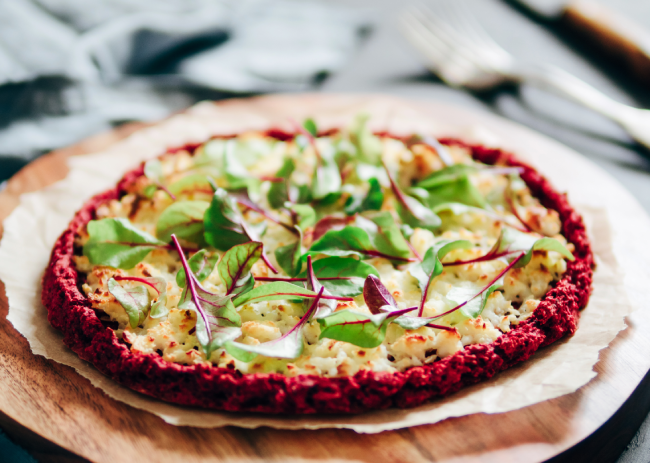Join the upper crust. Or, at least, eat some of it. The pizza industry made more than $46 billion in sales between October 2019 and September 2020.
Yet you don’t have to buy pizza to enjoy a great slice. If you learn how to make pizza dough, you can have a great dinner without picking up the phone.
But what is the perfect pizza crust like? What goes into a great pizza crust? How should you combine ingredients and knead your dough?
Answer these questions and you can turn your kitchen into a terrific pizzeria. Here is your quick guide.
Think About the Different Types of Pizza Crust
When people think of pizza crust, they often think of thin crust. You can find many guides on how to make thin-crust pizza online, which makes it a good crust for beginners. But you can experiment with other forms.
Chicago-style pizza relies on a form of thick crust. The pizza is cooked inside a deep dish, creating a pizza more akin to a casserole than anything else. Some thick crusts use butter as a cooking fat, though you can find various recipes online.
Detroit-style pizza also relies on a thick crust. But the crust has a crispy exterior with a chewy interior. This may entail using a different kind of flour.
You can make a gluten-free crust as well. Companies like Wiseguy pizza make their crusts with cauliflower flour. Visit different websites and see what established pizzerias do.
Find the Perfect Ingredients
For most recipes, you can use white all-purpose flour. You can make pizza dough with whole-wheat flour, but you should find a recipe that calls for it. Whole-wheat flour can have a strong flavor in high amounts.
You may be able to find “pizza flour.” This is flour that contains high levels of protein and gluten. The crust it produces is chewier, akin to traditional Italian pizza.
You will need to get active dry yeast for the majority of recipes. You can find yeast in most grocery stores, sometimes alongside all-purpose flour. You will also need ingredients for your sauce, cheese, and toppings.
Protect Your Yeast
It is important that your dry yeast stay dry. Keep it in its original packaging and consider putting it in an air-tight container for added security.
Wherever you put your yeast, the temperature must be cool. You can put it in a refrigerator or an insulated cabinet. If you have excess yeast you don’t plan on using for a very long time, you can put an open container in the freezer.
Keep Your Water at Room Temperature
Nearly every recipe calls for water. It is essential for mixing ingredients together and keeping the yeast alive.
The key to your water is to keep it at room temperature. If it is too cold, it can cause the yeast to freeze up, which will prevent your dough from rising. If it is too hot, it can kill your yeast and dissolve your other ingredients.
A room’s temperature is around 70 degrees Fahrenheit. It is okay to use water up to 120 degrees Fahrenheit.
Some recipes call for water between 100 and 120 degrees to help break down massive amounts of flour. You can microwave your water for 30 seconds to warm it up by a few degrees.
Combine Your Ingredients
The best pizza dough recipe will begin with the yeast. You will add sugar to your room temperature water and then pour your yeast into it. The sugar gives fuel for the yeast while the water warms them up.
As the water starts to froth, you can prepare your various dry ingredients. Once you’ve combined them into one bowl, you can add your yeast water.
Make sure you mix everything thoroughly. Baking powder can stick to the sides of your bowl. Tilt the bowl so you can see the sides and incorporate all the ingredients.
Knead Your Dough
Kneading is essential to making the perfect pizza crust. Your crust needs to spread out, regardless of what kind of dough you are making. Kneading warms the ingredients up and breaks down clumps that cause the crust to bunch up.
Find a flat surface, such as a countertop. Then spread a thin layer of flour across your surface.
Place your dough on the surface and start folding and stretching it with your hands. You may need to push the dough with the heels of your hands, and you may need to turn it. Keep working with your dough until it becomes smooth and malleable.
Once your ingredients are combined, you need to cover the dough with plastic wrap and let it sit. The dough will start to rise over the next 60 to 90 minutes. Be prepared to wait until it has risen.
Make the Rest of Your Pizza
You can finally put your dough in your pan and pour your additional ingredients on top. But you should not be careless with what you are doing.
You should apply a little bit of oil along the bottom of your pan. This will keep your crust from burning.
While you are putting your sauce and toppings on, you should keep your crust smooth. You can use the back of a spoon to keep it flat and remove any creases. Make sure to leave room for the crust along the edges of your pizza.
Prepare the Perfect Pizza Crust
The perfect pizza crust requires plenty of provisions. You should decide if you want a thin or thick crust. Get high-quality ingredients from your local store, including dry yeast.
Store your yeast in a cool and dry place until you are ready to cook. Make lukewarm sugar water for your yeast and then combine your ingredients thoroughly.
Spend several minutes kneading your dough. Once it is ready, put it in your pan and keep it as smooth as possible.
Once you’ve mastered crust, you can master other pizza elements. Read more pizza preparation guides by following our coverage.
P.S: Don’t forget to try our Aubergine and Caramelised Onion Cracker Pizza

